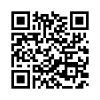THE USE OF VIDEO BROADCAST IN TEACHING LISTENING-SPEAKING
Downloads
(Title: The Use of Video Broadcast in Teaching Listening-Speaking). The latest technology, which comes like storm, gives us extra help in revealing the unseen that is beyond our reach and touch the untouchable in our hands. The technology gives us potential to do things we haven't been able to do before. One of the greatest challenges to the classrooms of today is mobile technology. As teachers, it's our job to make sure that students who are considered as digital natives learn through the omnipresence of the mainstream media. The world around us is changing in terms of communication and interaction that affect the way people see, think and learn the present environment, and connect with others. In education, we have three options when dealing with these changes: avoid it, struggle with it, or embrace it. It is our duty to prepare and adjust the classroom of today ready for tomorrow. Thus, this writing attempts to review the new trend in technology, the use of video broadcasting in teaching listening-speaking.
Keywords: listening-speaking, video broadcasting, media
Downloads
Anderson, M., & Anderson, K. (1998). Text Types in English 2. 1. ed. South Yarra: MacMillan Education Australia PTY LTD.
Brown, H.D. (2001). Teaching by Principles. 2nd ed. Englewood Cliffs, N.J.: Prentice- Hall.
Burns, A., & Coffin, C. (Eds.). (2001). Analyzing English in a global Context: A Reader. London and New York: Routledge.
Block, D., & Cameron, D. (Eds.).(2002). Globalization and Language Teaching. London and New York: Routledge.
Cresswell, J. W. (2003). Research Design: Qualitative, Quantitative, and Mixed Methods Approaches. Thousand Oaks, CA: Sage.
Crystal, D. (2004). The Language Revolution. Cambridge: Polity Press.
Chee, Tan Seng., Wong, Angela F.L. (2003). Teaching and Learning With Technology. Singapore: Prentice Hall Pearson.
Cruickshank, D., Jenkins, D., Metcalf, K. (2006). The Act of Teaching. New York: The McGraw-Hill companies, Inc.
De valenzuela, Julia Scherba de. (2002). Defining portfolio assessment. http://www.unm.edu/~devalenz/handouts/portfolio.html. Nov 8, 2012
Dudeney, G. (2007). The Internet and the Language Classroom. Cambridge: Cambridge University press
English Education Curriculum. (2009). Yogyakarta: Universitas Negeri Yogyakarta press.
English Learners in 21st Century Classroom. www.pearsonhigered.com
Floriasti, T. W. (2012). It's Mobile Era: Teaching Speaking Skills Using Podcast and Movie to the Teacher Students of Yogyakarta State University. Conference proceeding accepted and presented in 10th ASIA TEFL New Delhi, India. October 4-6, 2012
Floriasti, T. W. (2012). Developing Character Building Through Multicultural Reading Text. Proceeding Presented at International Seminar ACLL Osaka, Japan, April 28, 2012
Halverson, R., Smith, A. (2009). How New technologies (and have not) Changed Teaching and Learning in Schools Journal of Computing. Journal Teacher Education. Volume 26/Number 2 Winter 2009-10.. www.iste.org
Heick, Terry, Promoting a culture of learning, feb 14, 2014, http://www.edutopia.org/blog/promoting-a-culture-of-learning-terry-heick
Jenkins, J. (2006). Current perspectives on teaching World Englishes and English as a Lingua Franca. TESOL Quarterly, 40(1), 157-181.
Johnson, B., & Turner, L. A. (2003). Data collection strategies in mixed methods research. In A. Tashakkori & C. Teddlie (Eds.). Handbook of mixed methods in social and behavioral research (pp. 167-187). Thousand Oaks, CA: Sage.
Jung, She-Hwa. (2006). The use of ICT in Learning English as an International Language. Dissertation. University of Maryland.
McKay, S. L. (2002), Teaching English as an International Language. Oxford: Oxford University Press.
Naidu, Som. (2006). E-Learning A Guide Book of Principles, Procedures and Practices. New Delhi: CEMCA
Nation, I.S.P. & Newton, J. (2009). Teaching ESL/EFL Listening and Speaking. New York: Routledge.
Phan Le Ha (2005). Toward a Critical Notion of Appropriation of English as an International Language. Asian EFL Journal, 7(3), 30-42.
Thao, V.T. (2003). The Contribution of Multimedia Tools to EFL Setting Unfamiliar with Technology. Asian EFL Journal, 5(3), 1-14.
Warschauer, M. (2000a). The Changing Global Economy and the Future of English Teaching, TESOL Quarterly, 34 (3), 511-535.
Walker, A. (2014). The Danger of "Digital Natives"Myth. Retrieved from aishawalker.com July 30, 2016.
Walker, A. (2015). Language Skills in Digital Age. Retrieved from aishawalker.com July 30, 2016.
The authors who publish this journal agree to the following requirements. The author retains the copyright regarding the work being simultaneously licensed below Creative Commons Attribution ShareAlike License.

Jurnal Diksi by Faculty of Languages, Arts, and Culture, Universitas Negeri Yogyakarta is licensed under a Creative Commons Attribution-ShareAlike 4.0 International License.
Based on a work at http://journal.uny.ac.id/index.php/diksi




















